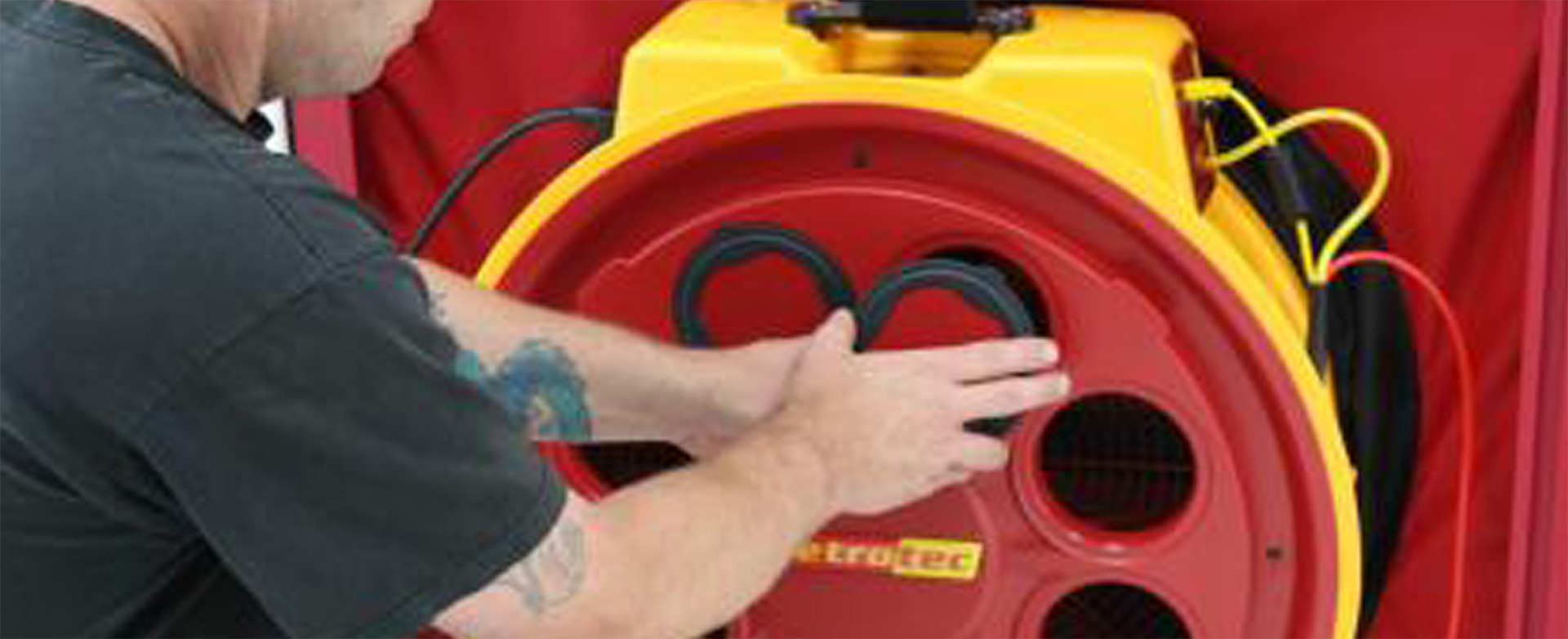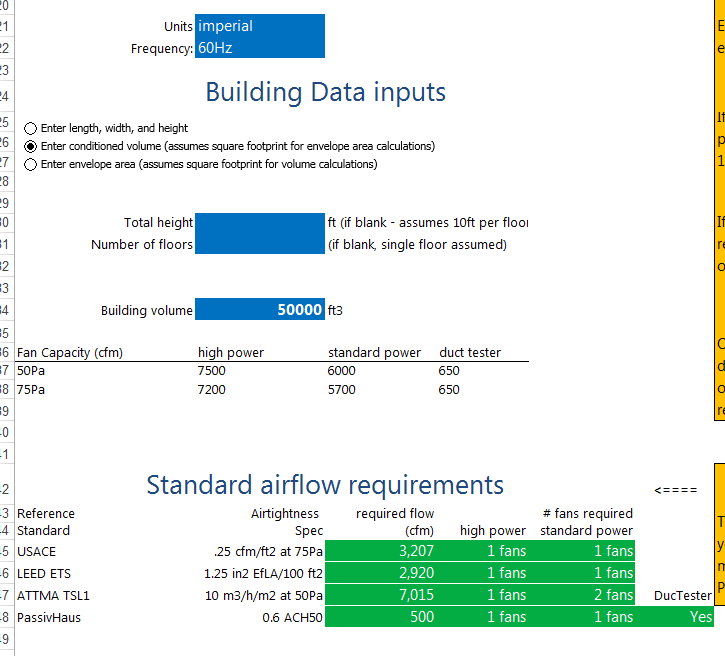Fire
-
Posted: September 13, 2017Read more »
I have a Energy or Enclosure Integrity Test to perform. How many fans do I need to properly run the test? Do I have enough fans to run the test?
We have created two tools to help you figure out how many fans you will need for your test.
Download either the Blower Door or Enclosure Integrity version of the Number of Fans Calculator.
Next, open the file in excel and "Enable Editing" when a security warning appears.
Fill in all the fields highlighted in blue. The number of fan results are highlighted in green.
Here is what the Blower Door Number of Fans Calculator looks like:
And this is what the Enclosure
-
Posted: September 13, 2017Read more »
NFPA and ISO do not certify any equipment or software directly. They are simply a standards writing body who takes input from the industry. In the case of hold time calculation and peak pressure evaluation the input from the industry was primarily from Colin Genge the CEO of Retrotec who wrote the original NFPA Enclosure Integrity Procedure for NFPA in 1984 and has been the only force in making changes to the Standards ever since. As a result, Retrotec training certification is accepted across all equipment manufacturers, end users in over 60 countries.
Colin Genge is used as a resource by Siemens, Tyco, Kidde, Ansul, Chemetron, Janus, Fike and 3M. If there is a question about enclosure hold time or peak pressure, he is the one who answers it.
-
Posted: September 13, 2017Read more »
The leakage rate IS important because there is a direct correlation between leakage area and peak pressure. If the leakage is small enough, every room will face destruction upon discharge. The reality is that most rooms are so leaky that the opposite is a problem. The agent typically leaks out so quickly that the enclosure doesn't pass the hold time requirements which means there is very little peak pressure which is why many systems do not require venting. For most FM200 systems there is a leakage range where the enclosure is tight enough to maintain sufficient hold time but not leaky enough to require vents. You'll only know if you're in that zone by performing a door fan test according to Annex C of NFPA 2001. ISO has a near identical Annex E.
Both Standards require a peak pressure evaluation to determine whether or not the enclosure will be damaged upon discharge. Unfortunately neither standard provides the peak pressure formula. Traditionally, manufacturers of inert systems
-
Posted: September 13, 2017Read more »
Our manufacturer's recommendation for calibration is as follows:
- Retrotec fans: Every 5 years.
- DM-2 Manometer: Every 2 years or if the Manometer fails a field check.
- DM32 / DM32 WiFi Manometer: Every 5 years or if the Manometer fails a field check.
Please review the DM32 and DM-2 Manuals on how to perform a field check.
This only covers our manufacturer recommendation. The energy standards (EN13829, ASTM, ATTMA, USACE, etc...) that you are using for test results may have different calibration intervals. Please consult the energy standards for the specific equipment calibration intervals.
-
Posted: September 13, 2017Read more »
Fan Pressure (flow pressure) is too low for the Range, which means you should change to a smaller more restrictive Range to increase fan pressure.
-
Read more »
Currently none of the standards require independent or 3rd party testing. Much of this responsibility is given to the AHJ who is supposed to ensure all codes are followed. The reality is few AHJ completely understand the standards and are easily persuaded by the installer that everything has been done correctly. Increasingly the role of ensuring the building is up to spec has been taken on by commissioning agents. Their job is to ensure that the entire building is up to spec and that includes the suppression system. The commissioning agent is hired by the owner to ensure the owner is getting what they paid for, which includes compliance with all building and NFPA codes.
We often get questions from AHJ or commissioning agents who are concerned about how the enclosure test was performed, and there is good reason for this. Half the enclosure integrity tests done in Europe and 60% of those performed in the US do NOT include a peak pressure evaluation. Peak pressure evaluation
-
Posted: September 13, 2017Read more »Answer:
If this is the Error you are seeing:
Click on the "Details" button to get more information. In the summary, you will see:
ERROR SUMMARY: "+ Your Web browser settings do not allow you to run signed applications."
This error summary indicates that there are security settings in your web browser that are preventing the application from being able to download.
Some people have had success by adding http://retrotec.com to their "Trusted Sites" in the Tools>>Internet Options>>Security settings
-
Posted: September 13, 2017Read more »
How and when should I compensate for leakage around the door panel?
Modular Panels are designed to be placed into doors that are not well sealed. The panel leakage for the Modular Panel is about 14 square inches compared to about 3 square inches for the Aluminum Frame and Cloth and around 1 square inch of leakage for the upgraded Aluminum Frame with snap together corners. These three panels represent three typical doorways:
- Poorly weather-stripped which would have an approximate 1/16 inch gap which equals about 14 square inches leakage;
- A well weather-stripped and adjusted door would be around 3 square inches or leakage;
- A super tight door could be as tight as 1 square inch of leakage and can even have less.
One rule of thumb is that all standards
-
Posted: September 13, 2017Read more »
I have a Energy or Enclosure Integrity Test to perform. How many fans do I need to properly run the test? Do I have enough fans to run the test?
We have created two tools to help you figure out how many fans you will need for your test.
Download either the Blower Door or Enclosure Integrity version of the Number of Fans Calculator.
Next, open the file in excel and "Enable Editing" when a security warning appears.
Fill in all the fields highlighted in blue. The number of fan results are highlighted in green.
Here is what the Blower Door Number of Fans Calculator looks like:
And this






